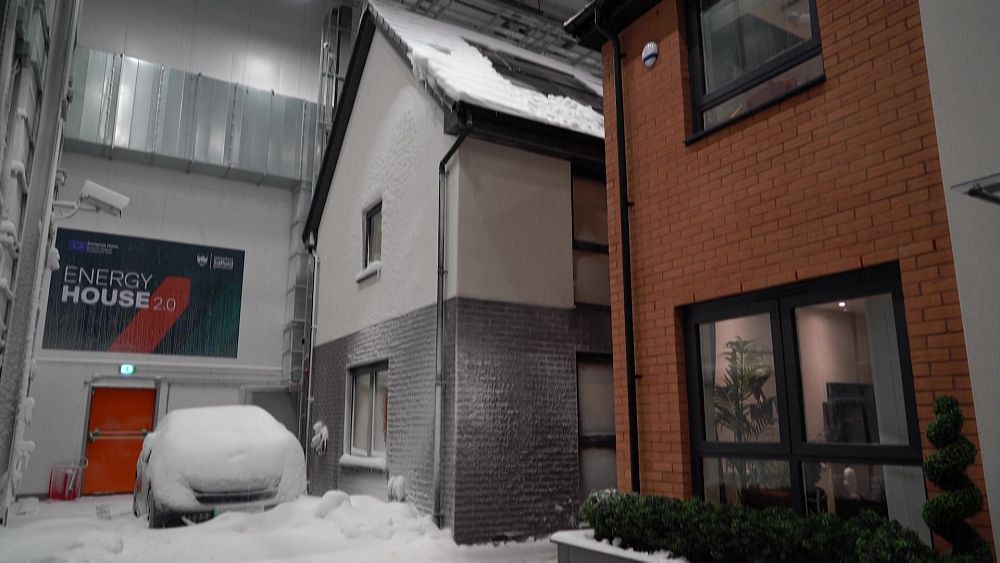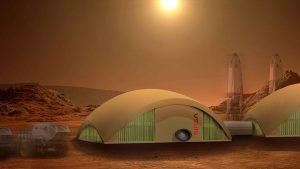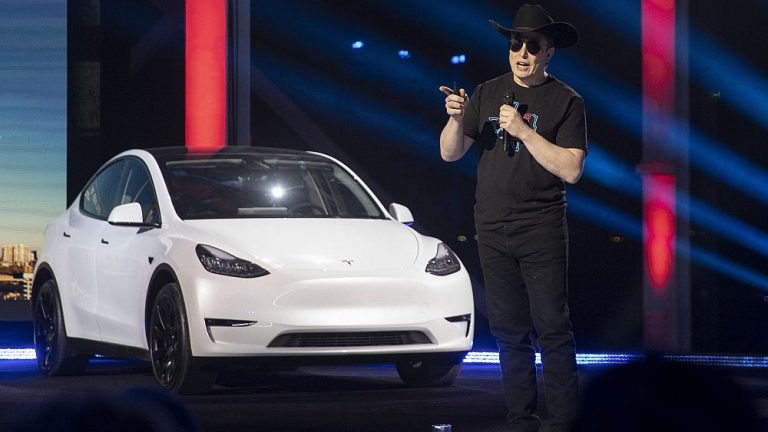
A newly opened mega-lab allows scientists to create the weather – all to test the energy efficiency of homes.
The huge facility in Salford, in the north of England, can emulate sunny and rainy weather conditions, and even wind and snow.
Capable of setting temperatures to a range between -20C to 40C, it contains a number of houses that are the test subjects.
The prototype houses are being put through their paces in different weather conditions to see how homes can be made more energy efficient at a time when energy costs – and climate change – are at the forefront of policy debates.
“When you try and understand how a house is energy efficient, you normally have to wait for the weather, so here we bring the weather to the research problem,” said Professor Will Swan, the director of Energy House Labs at the University of Salford.
“We can compress a two-year experiment into sometimes a matter of weeks”.
Working towards net-zero housing
The giant lab, called Energy House 2.0, is made up of two massive chambers containing the test homes which are made by some of the UK’s biggest housebuilders.
Swan explained they are experimenting with “everything” in the test homes: doors, windows, insulation, fabric, heating and cooling systems, ventilation systems, and heating controls.
“The experiments we’re doing here now with our partners are really to try and understand how we deliver those future net-zero homes in the UK,” he said.
And there is new technology being put to the test here.
“We’ve got the panel heating, which is a point source in the room, and then we’ve got a very unique research product here which is an infrared coving,” said Tom Cox, a technical director at Saint-Gobain, the construction product manufacturer involved in the testing.
There are also mirrors used as infrared radiators, sensors monitoring which rooms are in use, and air-source heat pumps being trialled.
“So, one of the key technologies that we’re trying on this house is almost like a building management system for residential buildings,” said Cox.
“You connect all of that technology into a single interface. It’s almost like the Alexa of the home energy system, and that can be automated as much as the occupant wants”.
To make sure the homes really do work for humans, volunteers are going to live in them for a few days at a time.
For more on this story, watch the video in the media player above.
Video editor • Roselyne Min














+ There are no comments
Add yours